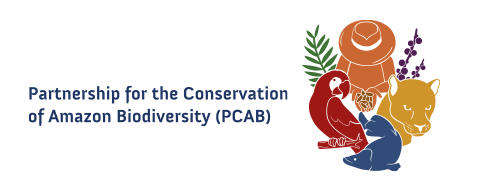A Magia da Amazônia - Winners
USAID is delighted to present the “A Magia da Amazônia” exhibition, which celebrates incredible people, initiatives, and landscapes that play a vital role in preserving the extraordinary diversity of species and conserving the Amazon forest. These photos were carefully selected through an online contest we launched on World Biodiversity Day.
The Amazon rainforest encompasses 60% of Brazil's territory. It's home to half of Brazil's Indigenous Peoples, with 89.5% of recognized Indigenous Lands, 357 quilombola communities, and hundreds of other traditional communities. These include rubber tappers, Brazil nut collectors, riverside dwellers, and agrarian reform settlers.
Protected Areas encompass a significant 46% of the Amazon, including Indigenous Lands and Conservation Units (23% and 25%, respectively). This incredible biome houses over 30,000 plant species and 2 million animal species.
USAID is one of the world's leading international development agencies, actively catalyzing solutions to address development challenges. We collaborate with governmental bodies, civil society, businesses, and communities across the entire Amazon region to conserve biodiversity, address climate change, and improve the quality of life.
Meet the winners:
Sustainable Value Chains
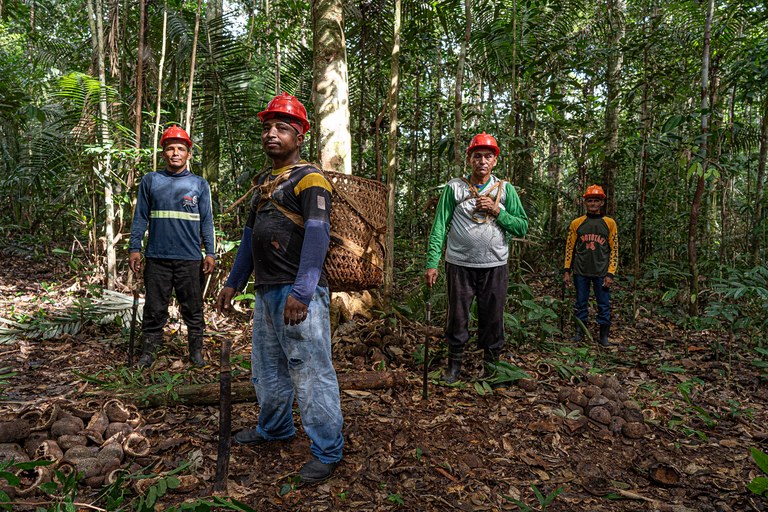
Photo: Thiago Theo
Brazil nut extractors in the field, using helmets and other personal protective equipments (PPE) provided by Sustainable Value Chains project, so they can safely harvest Brazil nuts within the Amazon rainforest. In addition to providing PPE, the project, supported by USAID and carried out by local partners, promoted training and meetings with local communities to raise their attention to the importance of the correct use of the equipment.
Sustainable Value Chains
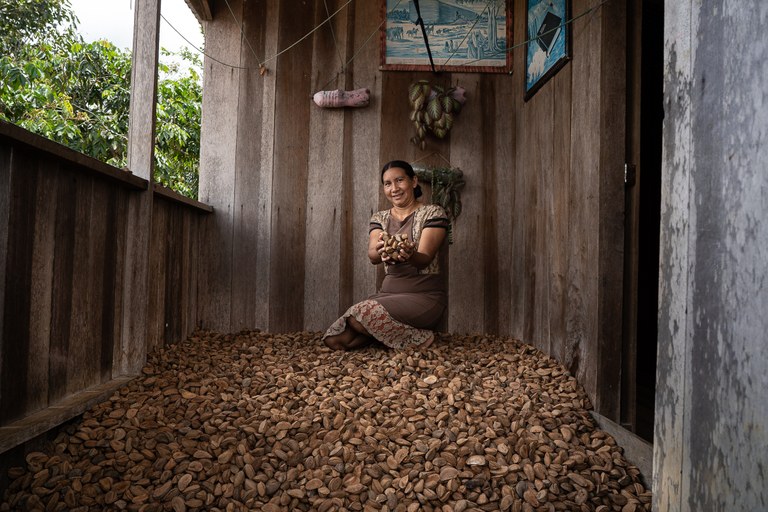
Photo: Thiago Theo
Dona Francilane Souza, a riverside community resident, on her house’s balcony, where she let the Brazil nuts dry after they arrived from the forest. She shows how the season's harvest has been. Women play a prominent role in the local community-based plant. They already make up 60% of the workforce - and the trend is that this percentage is increasing.
Ground of Tomorrow - Communities and Conservation
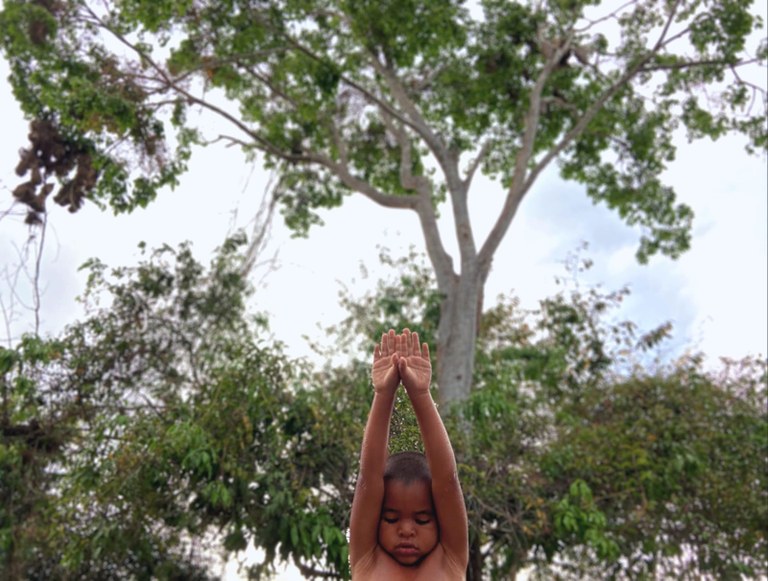
Photo: Marcella Tovar
Josué "taking a leap" in Riozinho do Anfrísio, while his mother and brother were examined on the health program in the Terra do Meio region, supported by the project "Ações Sinérgicas e Cooperativas de Mitigação do COVID-19 no Tapajós e Bacia do Xingu (Terra do Meio)”. The project is supported by USAID through the "Response to COVID-19 in Amazon" initiative, carried out in partnership with NPI Expand and Sitawi Finanças do Bem.
Ground of Tomorrow - Communities and Conservation
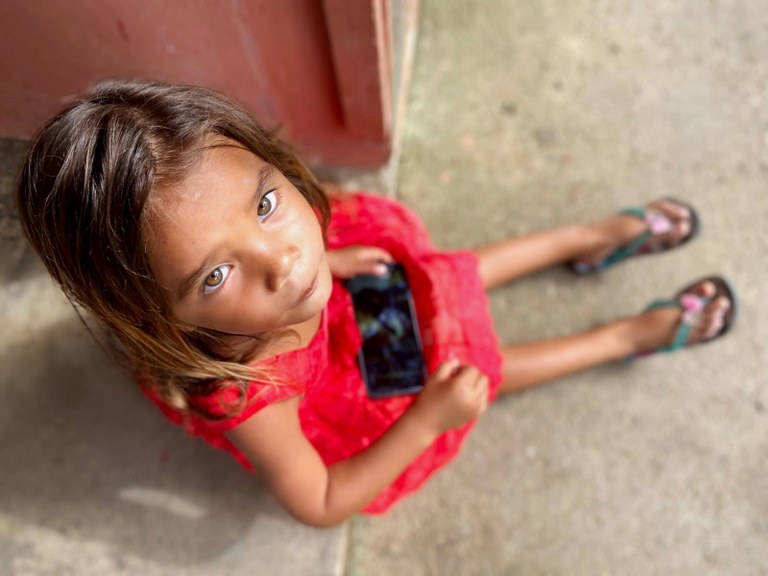
Photo: Marcella Tovar
Three days after the installation of the Star Link antenna to create one of the ten telemedicine hubs in Terra do Meio region through the project "Ações Sinérgicas e Cooperativas de Mitigação do COVID-19 no Tapajós e Bacia do Xingu (Terra do Meio)”, children begin to use the internet. The project is supported by USAID through the "Response to COVID-19 in Amazon" initiative, carried out in partnership with NPI Expand and Sitawi Finanças do Bem.
Sustainable Value Chains
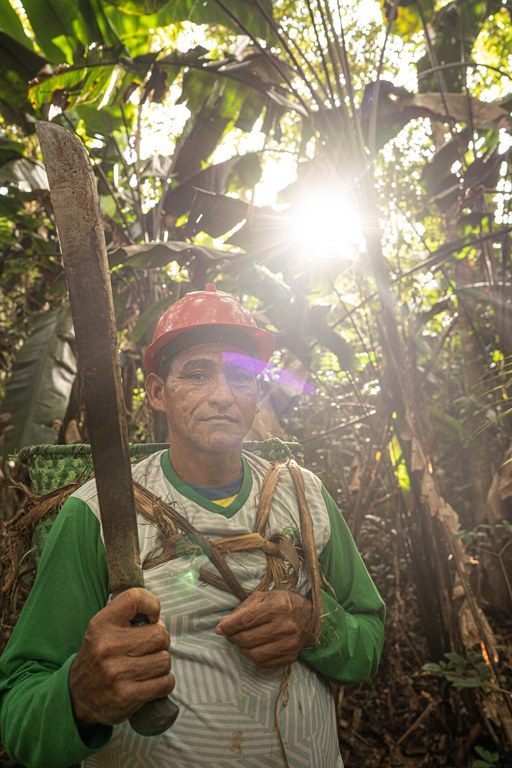
Photo: Thiago Theo
Augusto Torres, a local community resident in Beruri, Amazonas, during the Brazil nut harvest. The Brazil nut is one of the main biodiversity products that generate income for families, which also helps keep the forest standing. The Cadeias de Valor Sustentáveis project, supported by USAID in partnership with several organizations, facilitates the production chain of nuts in the Amazon, increasing work and life conditions for the local riverside population, who are entirely responsible for the production since the harvest.
Sustainable Value Chains
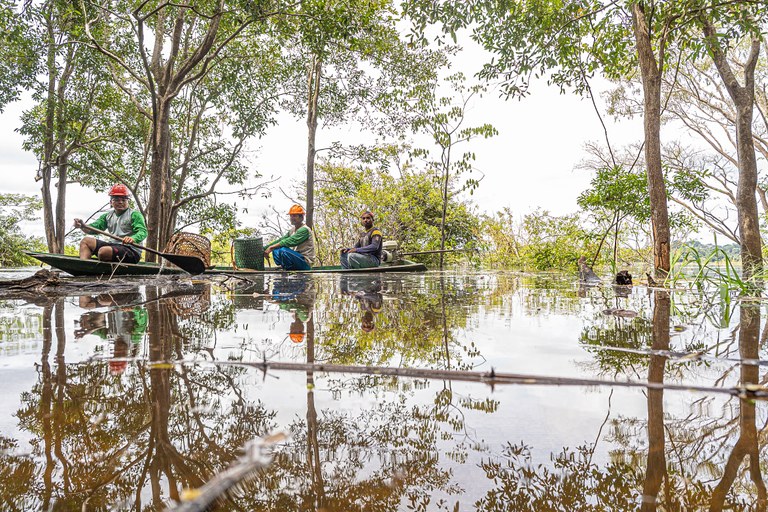
Photo Thiago Theo
Men arrive by boat to harvest chestnuts on the banks of the Purus river. The transport of Brazil nuts from harvesting areas to local communities is often long distance and dangerous, due to rivers and waterfalls. Projects like Cadeias de Valor Sustentáveis, supported by USAID, help show the real value of extractivists community’s work.
Sustainability of Small-Scale Fishing
Biodiversity, Diversity, Equity, and Inclusion
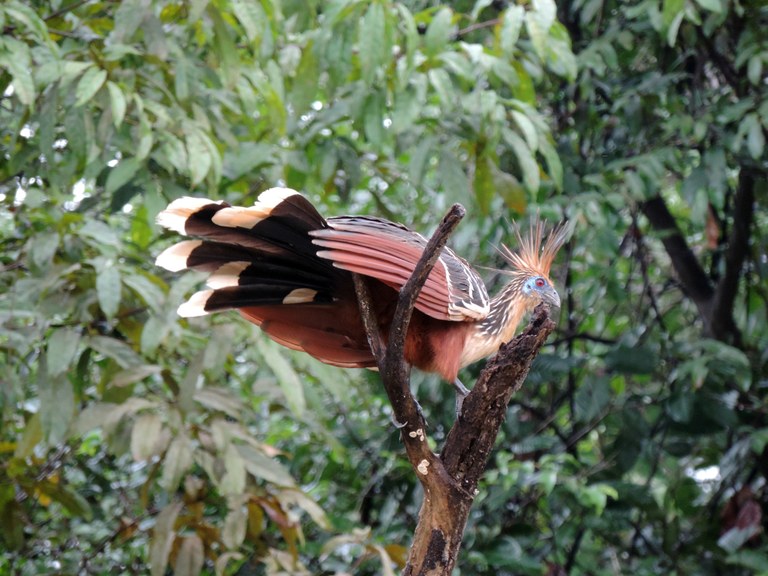
Photo Renato Azevedo Matias Silvano
The "gypsy" is known for its colorful feathers, which open like a skirt. It is a unique species, currently being studied. Indiscriminate hunting has put the “gypsy” under threat. Preserving its habitat is essential to protecting the species.
Sustainability of Small-Scale Fishing
Biodiversity, Diversity, Equity, and Inclusion
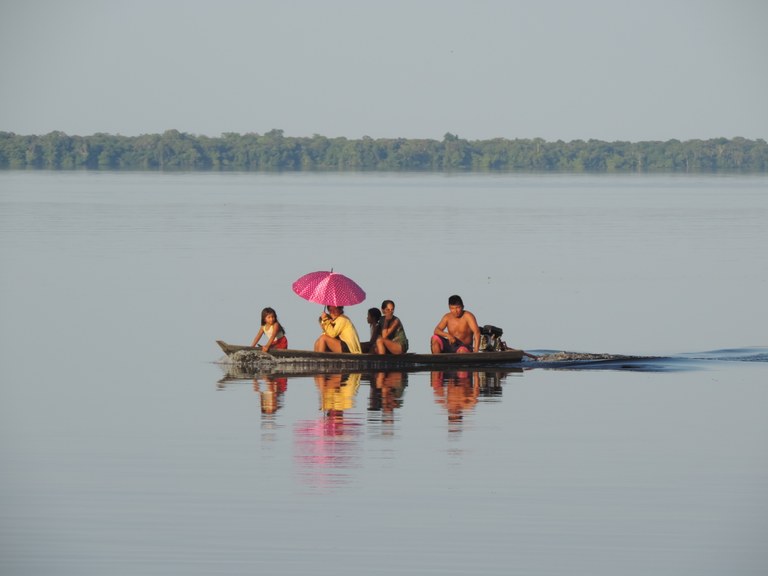
Photo Renato Azevedo Matias Silvano
In the Amazon landscape, rivers are like streets and roads, connecting communities and families. The photo was taken during the interviews for the research project named "Linking Sustainability of Small-Scale Fisheries, Fishermen's Knowledge, Conservation and Co-management of Biodiversity in Large Rivers of the Brazilian Amazon", supported by USAID.
Sustainability of Small-Scale Fishing
Biodiversity, Diversity, Equity, and Inclusion
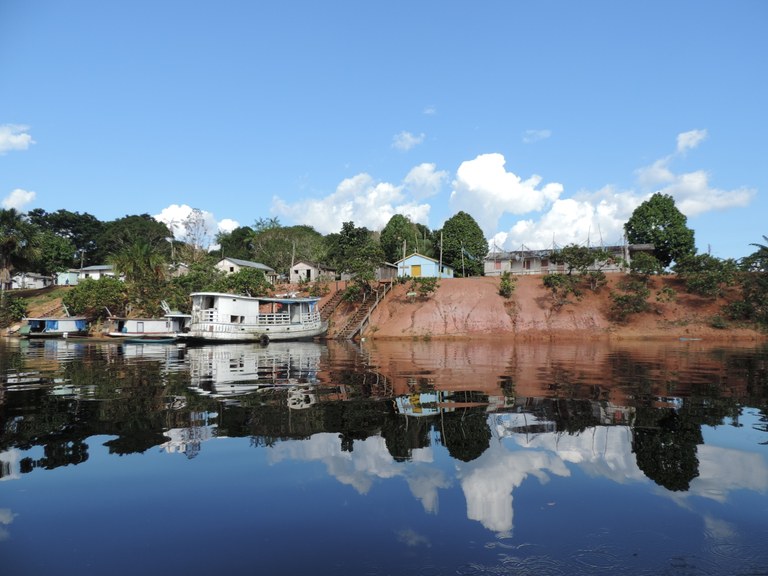
Photo Renato Azevedo Matias Silvano
The Tapira community, on the riverside of Unini River, was visited during the research project "Linking Sustainability of Small-Scale Fishing, Knowledge of Fishermen, Conservation and Co-management of Biodiversity in Large Rivers of the Brazilian Amazon". Fishing is an important income for Amazon communities. It is also a matter of food security and a part of their tradition. Fishing also helps communities protect biodiversity. As regular visitors of fishing spots while carrying out sustainable practices, they protect areas from invaders and maintain fish stocks.
Sustainability of Small-Scale Fishing
Biodiversity, Diversity, Equity, and Inclusion
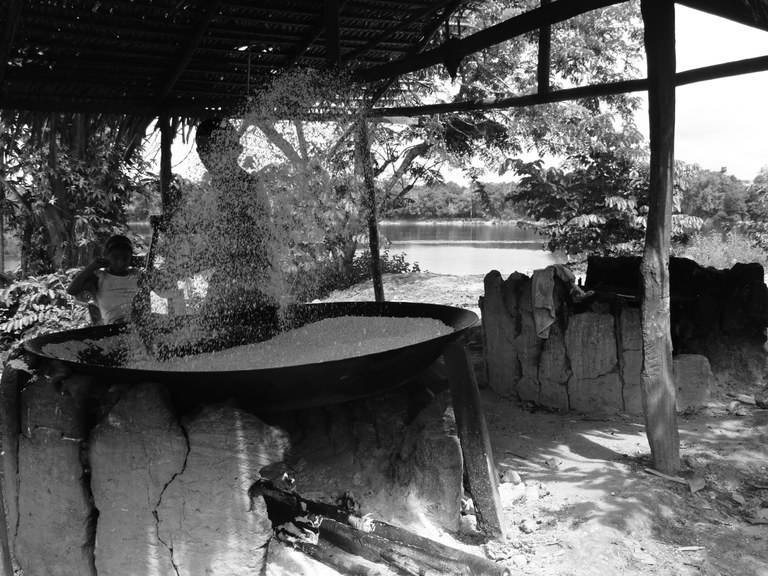
Photo Renato Azevedo Matias Silvano
Cassava is widely used in Amazon cuisine due to its great versatility. Flour processing helps maintain it as a source of food for Amazon families throughout the year.
"Here is the beef!"
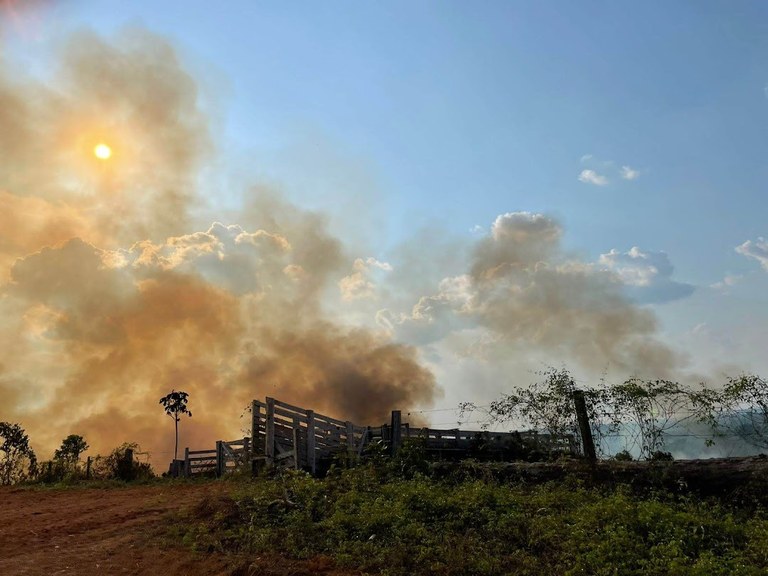
Photo: Wendy Francesconi
"Here is the beef!", reflects an unconventional understanding of the Amazon rainforest, which shows a not so exposed side of the region's image, showing the fires as huge challenges to be faced. Sustainable enterprises need to deal with the threat of illegal activities that may occur around their territories.
Rivers of Hope - Communities and Conservation
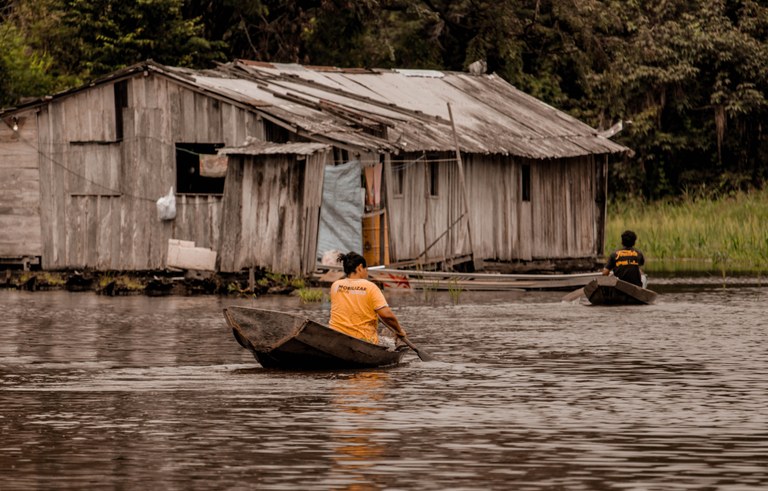
Photo Daniel Souza
Mr. Raimundo and Mrs. Edinalva coming home in the late afternoon, in their community on the banks of the Rio Negro, Amazonas. Like them, dozens of families took part in “Rios da Esperança” project, an initiative of the United States Agency for International Development (USAID), NPI EXPAND and Sitawi Finanças do Bem. The project takes place aboard the boat Marujo. Besides offering medical care and vaccination against Covid-19, the expedition provides information on health prevention also through art.

